It can be a shocking sight: you look in your home aquarium and see your favorite freshwater snail floating motionless in the water.
Before you become alarmed and think you have a dead snail on your hands, be aware that in many cases, seeing your snail floating does not mean disaster.
In nature, snails float frequently for short periods.
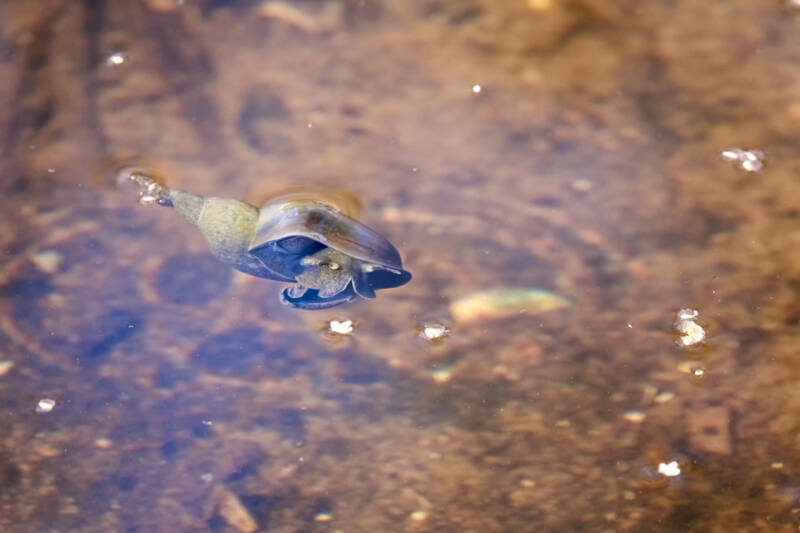
Those species possessing lungs can trap air in the organ while those possessing trap doors can rapidly close off their shell, thereby trapping a small amount of air inside.
They do this to change environments by moving along with water currents, to move closer to a choice food source, or to get away from a predator or aggressive neighbor.
In a home aquarium, floating is perfectly normal in most cases.
You can find your aquatic snails floating anywhere in the water column – in the middle or at the water surface.
After some time, the snail will release the air, settle to the bottom of the tank, and go about its business.
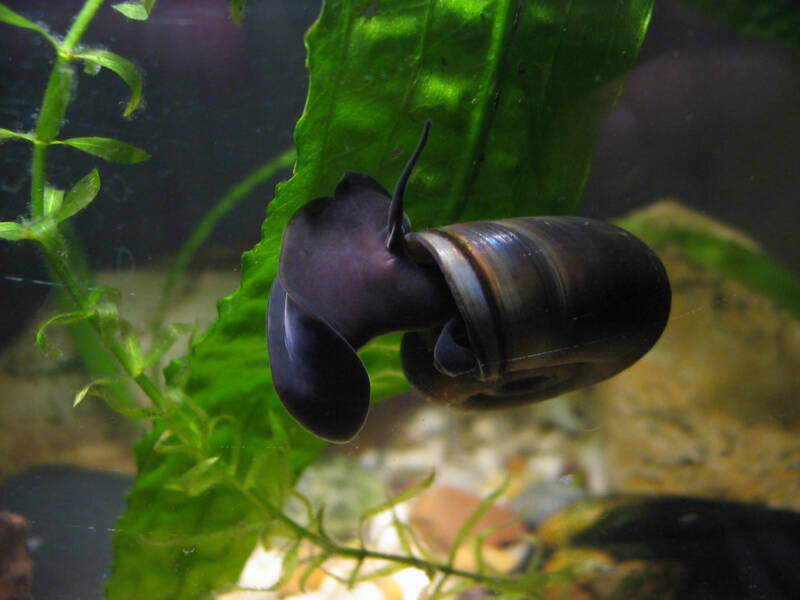
This is not to say that you should write off an occurrence of your snail floating completely.
If they float for an extended period, this can indicate a problem either with your snail (they are ill) or with the water in the tank.
An “extended period” can vary, depending on the source, but a day or two, even up to a week of your snail floating may not indicate distress or illness.
If the time stretches on for longer, then you need to take action (see What to do if my snail is floating? below).
Read on for more information on reasons why your snail may be floating and what to do if they are.
[toc]
Why is my snail floating upside down?
As they would do in the wild, your snail may be floating for a variety of benign reasons.
However, their behavior could also indicate poor water parameters or even sickness, which you need to address quickly.
Natural Behaviors
Your snail may be trying to get at nutrients in the water column. Because they are naturally slow-moving, some snails will trap air in their shells to quickly relocate to an area with more food.
Of course, in the wild, a current would carry the snail to a new location.
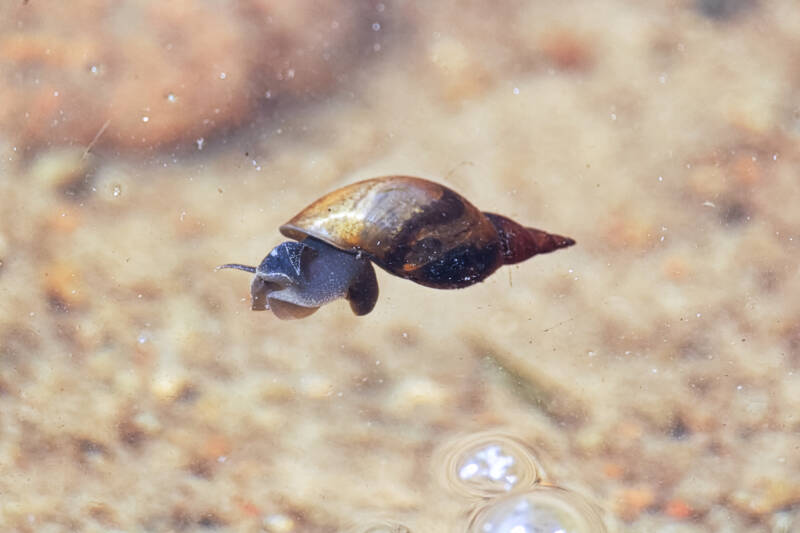
In an aquarium, this method of travel is less effective. Nevertheless, mystery snails (and apple snails) will frequently float up to the top of the tank to snack on any biofilm that may have formed on the water’s surface.
While these activities are not necessarily a cause for concern, they could be an indication that your snail is not getting enough to eat.
Make sure you feed your snails at least once a day to keep them from feeling the need to relocate.
Another natural behavior that can cause your snails to float: they may simply be sleeping.
While most snails will stick to something while they rest, others can float upside down when they are sleeping.
Depending on the species, they may sleep for a few hours or as long as two to three days.
Nerite snails, for example, will take multiple naps after an extended period of activity. When they are ready, your snails will release the trapped air and resume normal movement.
Finally, your snails may be trying to escape a predator, aggressive species, or swift water current.
Some snails, such as bladder snails and ramshorn snails, can close their shells quickly in response to a threat or even due to the water movement in the tank being too high.
Keep the filter flow moderate and always pair your snails with gentle tempered fish. Aggression or continued stress can cause them to close their shells and float away to escape.
Indications of a Problem
Your snail may be trying to tell you there is something wrong with the water.
An immature (or poorly cycled) tank, a big water change, a spike in contaminants or other chemicals, or a shift in temperature or pH can all cause your snail to float in an attempt to move to better water.
Mystery snails and apple snails are sensitive to poor water conditions and parameters outside of their needs.
Assassin snails are another aquatic species that is especially sensitive to sudden shifts in water conditions, such as an ammonia spike.
Do snails float when they die?
Yes, a dead snail will float. Most snail species live for around a year, so snail death is a common event if you have them for an extended time.
Check your floating snail by removing and examining it.
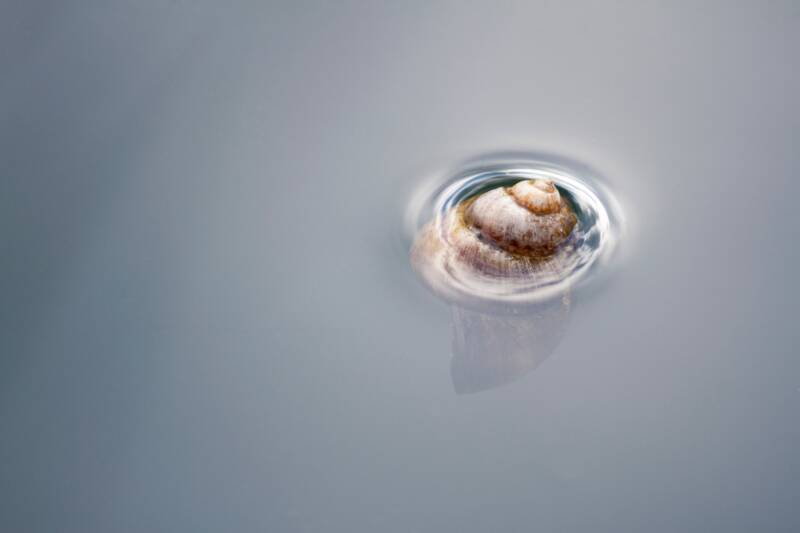
Look to see if the shell is empty or if it is closed. If the latter is the case, your snail may be fine.
If part of the body is exposed, tap it gently. Your snail should react by retracting into its shell. If it does not, your snail is likely dead.
Another sure way to tell if your snail is dead is if there is an unpleasant smell. As the body of the snail decays, there will be an unmistakable smell associated.
If you find a dead snail in your tank, remove it promptly using a container, bag, or net.
Leaving it in the tank can risk passing disease to other inhabitants.
If the snail has been dead for a while, there is a good chance the ammonia levels in your aquarium will spike as well, which can harm the other inhabitants. Play it safe and do a partial water change.
What if my snail is floating and hanging out its shell?
In this case, you should suspect copper poisoning.
Copper can be introduced to a home aquarium through several means, including aquatic plant fertilizers and fish medicines.
Yes, the same medicine that helps cure your sick fish can be fatal to your snail. To prevent this, always treat sick fish in a separate hospital tank.
If you suspect copper levels in your community tank, you can move your snails to a separate, well-cycled tank, monitor their activity level, and mitigate the copper contamination.
If your snails do not respond positively after you have placed them in the clean tank, then they may be ill.
Why is my snail floating after laying eggs?
If your snail is floating after laying eggs, it may have more to do with the water quality than with the snail eggs themselves.
Check for contaminants and ensure the water temperature and pH numbers are in the proper range.
That said, mystery snails will sometimes float naturally after laying eggs. They will do this for a short period to recover, allowing the female to remain near the water surface for easy access to air.
What to do if my snail is floating?
1. Check to see if your snail is healthy
If you tap on the shell or any exposed part of the body and your snail reacts by moving or hiding inside its shell, they are likely healthy.
If they do not react and their body is loose, assume they are ill and need attention.
If they are floating and actively trying to get out of the tank, that is a not-so-subtle hint by your snail that it is time to check your water parameters.
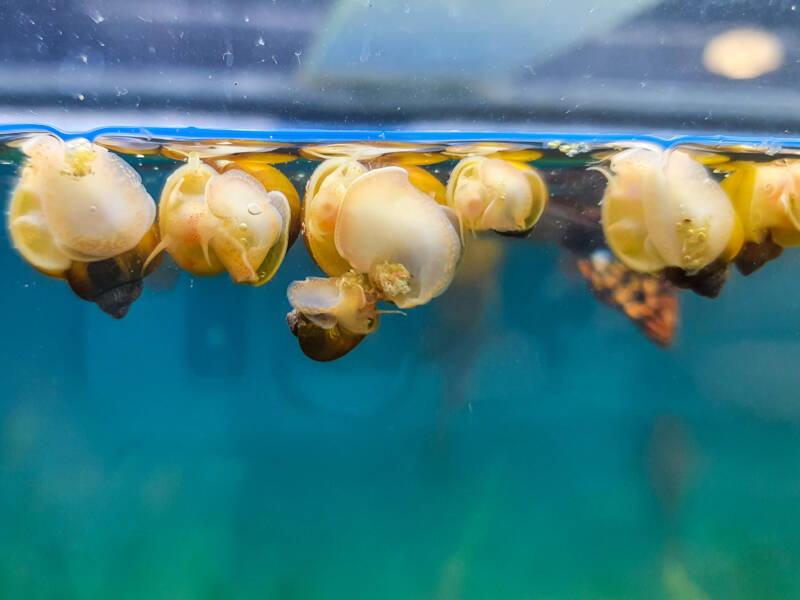
Always keep quality test kits on hand. In this case, you are looking for elevated levels of ammonia, nitrites, and nitrates. These need to be near zero.
Clean your filters and lower the water flow. Change out 20 percent of the water and remove excess detritus from the tank.
2. Check the water temperature and pH
Ensure these are in the optimum range for your snails.
A good rule of thumb is to keep the temperature between 75 to 85°F (24 to 29°C), but always verify this range for the species in your tank.
The same goes with pH levels. While many aquatic snails enjoy a neutral pH between 7 and 7.5, other species may be outside that.
3. Always introduce your snails to a mature, properly cycled tank
This means a tank that has been cycled for two to six weeks to stabilize nitrate and ammonia levels.
Adding your snails to an immature tank can cause them to float.
4. Feed your snails a nutritious, varied diet
If they are not getting what they need from their environment, you may need to supplement their food. Otherwise, they may float to the water surface to get at any formed biofilm.
Add an air stone to agitate the surface and prevent the film from forming if you wish to keep your snails from floating up to snack on it.
Provide other sources of nutrition on the tank bottom once a day, including the occasional blanched vegetable to round out their diet.
5. There may be air trapped in your snail’s lungs
Finally, if you think there may be air trapped in your snail’s lungs (for those species with lungs), gently swirl them around and reorient them to try and release the air. If successful, the snail should sink.
Closing Thoughts
As you can see, a floating snail is not necessarily a cause for alarm. However, it does require your attention.
Make sure you mitigate any possible reasons that might cause your snail to float, including:
- Poor water conditions (temperature, pH)
- High ammonia, nitrate, or nitrite levels
- Copper poisoning
- Aggressive species
- High water flow
- Insufficient food.
If all these parameters are in order, your snail may simply be doing what it does in nature. Keep an eye on it, and your snail should resume normal actions within a few hours to days.
We would love to hear from you! We have heard some aquarists note that their snails float frequently.
If you keep snails in your tank, do you find that is the case?
